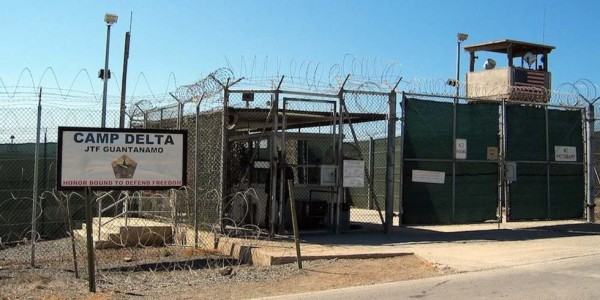

The prison complex at the Guantánamo Bay, Cuba naval station built after the Sept. 11 attacks that was billed as the venue for the “worst of the worst” in international terrorism now seems be the site of the “worst of the worst” in government excess.
As reporter Carole Rosenberg wrote in The New York Times on Monday, the total cost in 2018 for housing just 40 prisoners, paying the guards, and running the military tribunals there is somewhere north of $540 million, or roughly $13 million per prisoner.
The cost to house a single prisoner in California, meanwhile, is about $75,560 — which earned it a comparison to attending Harvard, a couple grand less.
So what is going on? Are prisoners at Guantánamo sitting on golden toilets and drinking champagne? Are mythical $600 hammers being used for renovations?
As Rosenberg writes, it’s not exactly an apples and oranges comparison between Gitmo and other federal prisons. Since it’s situated on an island outside the United States, the Pentagon has to send guards on rotations there — usually National Guardsmen or reservists — as well as account for costs like Coast Guard patrols of the nearby waters, medical staff, lawyers, chaplains, and all the requisite support staff.
“I think it’s a horrible waste of money. It’s a catastrophic waste of money,” retired Air Force Col. Gary Brown, an ex-legal advisor to the former head of Guantánamo’s military court, told NPR last week. Brown has filed a federal whistleblower complaint that alleges “gross financial waste” and “gross mismanagement” at the facility, according to NPR.
One part of the cost equation comes from government prosecutors, who have been pursuing death penalty convictions for some, which critics say is a waste of money and time given that the evidence in many cases is “tainted by torture.” And, as Brown further argues, even if they get a conviction, most of those cases will result in lengthy appeals that will cost billions more (Brown pushed for settlement negotiations instead).
This has also brought in a windfall for at least some civilian defense attorneys, whom the Pentagon pays for the special skills in navigating death penalty cases. Despite military judges ordering the non-disclosure of how much is being paid to defense attorneys at Guantánamo, NPR got its hands on a document showing that some bill roughly $500,00 a year.
Still, as Rosenberg notes, the costs are rising despite the falling number of prisoners.
In 2013, it cost about $2.7 million per prisoner (which is, admittedly, still a lot!), up from an estimate of $800,000 per prisoner in 2011. Factor in the age of some of the prisoners still there and the medical care they’ll eventually need, and it’s easy to see the $13 million figure going even higher.
“They brought a new cell down that is wheelchair accessible, so you’re going to have the most expensive, most notorious old-folks home in the Caribbean that you’ve ever seen,” Michel Paradis, a defense attorney for Abd al-Rahim al-Nashiri, the alleged mastermind of the bombing of the USS Cole naval warship, told NPR.
